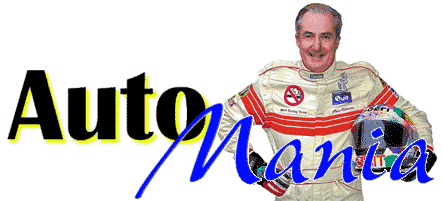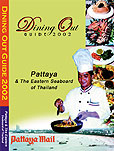
by Dr. Iain Corness |
European GP this weekend at
Nurburgring
Oh if it were only the original Nurburgring!
That would really sort out the men from the boys. However,
even on the ‘new’ de-tox’d circuit, at least the circus
is back in Europe and we can watch the race at sensible hours.
I believe that will be 7 p.m. our time - but as always, check
your local TV feed for the correct time.

The original Nurburgring was built in the
Eifel Mountains in Northern Germany in an attempt to attract
tourists. It first hosted the German GP in 1927 when the full
17.58 mile circuit was used, but from 1929 only the 14.17 mile
Nordschleife (North Loop), with its 176 corners, was used for
the German GP.
During the 1960s, the circuit received
increasing criticism which resulted in an S bend being built
at the end of the long finishing straight to slow the cars as
they passed the pits. By 1970, the Grand Prix Drivers’
Association had demanded a list of improvements which called
for the ironing out of bumps, the felling of thousands of
trees to create run-off areas, the installation of Armco
barriers, a better surface and the re-profiling of some
corners. Following a serious accident to Niki Lauda in 1976,
it was deemed too dangerous and in 1984 the new 2.882 mile
circuit, a modern autodrome with little character, was
constructed close to the original track. It is a pale shadow
of the former circuit, which still exists today and is used
for Touring Car races. Drivers who still compete there speak
in terms of awe of what is possibly the most demanding circuit
ever constructed. The public can also have a fang around the
famous Nordschleife by paying a few euros, and I can
personally assure you that it is worth it, if you have the
opportunity.
If you would care to join me for the TV
coverage, I will be watching in Shenanigans, Pattaya Second
Road. I generally like to try the carvery before settling back
for the race.
|
Autotrivia Quiz
Last week to stop the webcrawlers, I
published another picture of a car to identify. This
photograph was taken at an international motor show in the
1930’s and I asked what car it was? It was indeed the
Maybach, all 12 cylinders and the biggest car exhibited at the
International Automobile Show in Berlin in 1933.

Since a few of my readers expressed
ignorance of the marque, a little about Maybach will not go
astray. The ‘father’ of the cars was Wilhelm Maybach, who
as a young man was taken under the wing of Gottlieb Daimler
(yes, the DaimlerChrysler Daimler). Wilhelm’s son, Karl
Maybach began to produce cars under the family name in 1919,
with the development model being built on a Mercedes chassis.
They produced 1,800 Maybach’s between 1921 and 1940, but
they too were casualties of WWII. The name was revived in last
year, with the new behemoth displayed at the Geneva Motor
Show. The Daimler connection is still there - the car being
built by Mercedes at their Sindelfingen plant and they can
produce up to 1,500 Maybachs each year. Benz have produced
this car to be the epitome of motoring snobbery. I doubt if
they’d even take our phone call, but if you were the head of
a telecoms firm in Thailand, I would suggest they’d send a
plane to get you!
Each car is individually tailored to your
own requirements. The electronics are such that Peter
Hausserman, DaimlerChrysler’s director of telematics, said
that his company’s Maybach luxury car showed just how
intricate this could be. “The Maybach rear-seat
entertainment system is the most complex system we have ever
developed,” he says. “Then we have to incorporate very
special needs of customers, since each system is more or less
customer-adapted.”
So to this week. Which well-known GP race
car had a Maybach engine? And who was the driver? And what has
all that to do with ex-world Champ Aussie Alan Jones?
For the Automania FREE beer this week, be
the first correct answer to email [email protected]
Good luck!
Carmakers join attack on
SARS. (Really?)
Spotted the following item on the SARS saga
in Automotive News this week, which naturally took my
attention. According to the item, General Motors China has
donated cash and goods valued at over 2.6 million yuan, or
about $314,000 at current exchange rates, to the China Charity
Federation in Beijing to help the fight. The donation includes
$120,000 in cash, which will help fund the education of
children of medical workers who have died fighting SARS.
The donation also includes five Chevrolet
Blazer SUVs built at Jinbei GM Automotive Co., owned half by
GM and half by First Auto Works-Jinbei Automotive Co. The
vehicles will be used by medical workers involved in the anti-SARS
campaign. In addition, Shanghai GM Automotive Co., jointly
owned with Shanghai Automotive Industry Corp., recently
donated 10 Buick GL8 wagons to help the anti-SARS campaign in
Shanghai.
Nissan Motor Co. has donated $180,000 to
the Chinese government for anti-SARS efforts. About $120,000
will go to China’s ministry of health and $60,000 to the
Beijing municipal government. Zhengzhou Nissan Automobile Co.,
Nissan’s affiliate in China, also is donating four Paladin
SUVs and a bus, valued at $156,000, to local governments to
aid in the battle. Delphi China Holding Co. and its 10
ventures in China have donated $120,000 to the Red Cross
Society of Shanghai and have encouraged local staff to make
personal donations.
I have no idea what prompted all this
“generosity” seven months after the outbreak started, but
I really wonder just how much of the money donated will
actually get to the areas that it might be needed in, and how
much will fall through the cracks in the plaster and end up in
some Chinese official’s bank accounts? But then, I always
was an old cynic.
|
|
So what did we learn from the
Canadian GP?
While once more the TV race callers whipped
themselves into a frenzy of excitement, it didn’t do the
same for me. The reason the four cars at the finish were line
astern was because they couldn’t pass each other! Once
Michael Schumacher in the Fazza got through to the lead at the
pit stop, there was nothing Ralf S or Montoya in the BMW
Williamses could do about it. They were joined by Alonso’s
Renault, who had caught them with about five laps to go at
around one second a lap, but once he was on the back of the
high-speed train, there was nothing he could do either.

Justin
Wilson

Ralph
Firman
Talking about BMW Williams, Ralf Schumacher
has decided to extract the digit, and at the high speed power
Gilles Villeneuve circuit of Montreal, he showed a decided
flash of brilliance in qualifying to snare pole position.
Wunderkid Raikkonen hung his McLaren on the wall again in
Qualifying, the second time this year. Ron Dennis would not
have been happy, while his running mate, David Coulthard put
in another lack-lustre performance.
Again at the Canadian GP, the quickest off
the mark on the first lap was Justin Wilson in the Minardi. He
manages to leap-frog his way from the bum-end through to the
middle of the field every race, bringing words of wonder from
the telly-bletherers, but we never get to see it. Surely there
must have been one camera to record all this? I was moaning
about this to the well-known motoring scribe Dr. Mike Lawrence
in the UK who wrote back, “Remember when Alonso was with
Minardi? We never saw him until the Spanish GP when the
Spanish director highlighted a local hero. There he was like a
terrier snapping at the heels of a Benetton when he should
have been nowhere near a Benetton. Nobody who saw that will be
surprised by his performances this year. When will we see
Justin? Don’t hold your breath.”
What else did Canada teach us? Once more I
lament the reliability of the current crop of F1 machines. The
world’s most expensive motor vehicles appear to have
exploding hand grenades for engines. Less than half the field
staggered through to the end. For 10 million dollars an
engine, you’d want a little more reliability! Surely?
Probably what should be done is to give everyone of the F1
teams a supply of Toyota Corolla engines to use instead.
They’d only need one per season. Certainly cut costs!
What else did we learn? Well, Rooby Baby Barichello is
still proving quite conclusively that he is definitely Number
Two material at Ferrari. Likewise Ralph Firman at Jordan and
Pizzonia at Jaguar are not covering themselves in glory. There
are probably better drivers out there in the lower formulae
and I hope we get to see new fresh ‘talent’ in 2004.
Spanish fly (sorry, can’t
help myself some days!)
The nice folk at Yontrakit Automobiles, the local SEAT
distributors sent me this pic. Unfortunately the words were in
‘wriggle writing’, but I gleaned enough that this was
their Spanish GT championship leading SEAT Toledo GT. What
attracted me was the 20 plus vehicles behind the SEAT.
Directly behind the Toledo is a Dodge Viper, there’s more
than a handful of Ferrari’s and Porsche’s in there too. If
only we could get fields like that over here. Ah well, we can
always dream.

Pick-ups
continue to pick up
Vehicle sales in Thailand continue to
improve, with the one-tonners leading the way. Sales of around
400,000 units are expected by the end of the year, but
analysts are saying that production will be around 700,000
units by the end of 2006.

Ford
Ranger
Fuelling these buoyant figures is the fact
that domestic sales of pick-ups rose by almost one third so
far this year over the same period last year. This comes after
another record setting year in 2002.
With AFTA around the corner, many of the major
manufacturers have plumped for Thailand to be the
manufacturing base for the Asian basin, including Toyota,
Isuzu, Mitsubishi and Ford/Mazda. Much of the output is
directly destined for export, including Europe and Australia.
For example, Toyota indicates it will spend 30 billion baht to
raise its local annual output of pick-ups and MPV’s to
200,000 a year by this time next year. Ford Sales Thailand
also reports an increase with its Ranger pick-up series, up
14% in the past two years.
|
|
|
|

News | Business News | Features | Columns | Letters | Sports | Auto Mania
Kid's Corner | Who’s Who | Travel | Our Community | Dining Out & Entertainment
Social Scene | Classifieds | Community Happenings | Books Music Movies
Clubs in Pattaya | Sports Round-Up
E-mail: [email protected]
Pattaya Mail Publishing Co., Ltd.
370/7-8 Pattaya Second Road, Pattaya City, Chonburi 20260, Thailand
Tel.66-38 411 240-1, 413 240-1, Fax:66-38 427 596
Copyright © 2002 Pattaya Mail. All rights reserved.
This material may not be published, broadcast, rewritten, or redistributed.

|
|


Now
Available
|